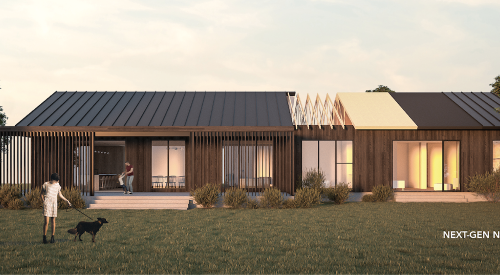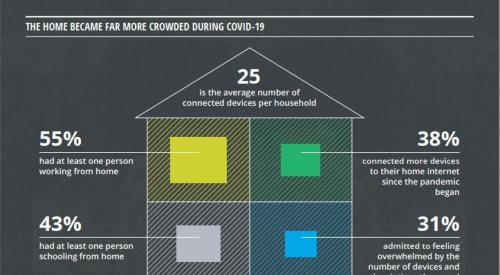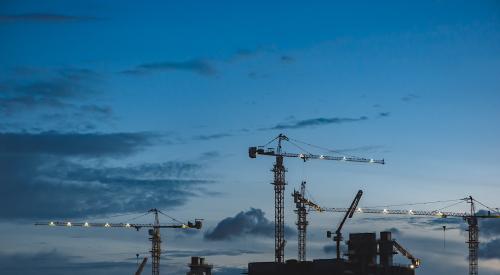Construction Advanced Materials Makers can Enhance Industry Efficiency with Technology
Innovative building and construction materials, such as pollution-absorbing bricks, light-generating cement, photovoltaic paints, and self-healing concrete can make buildings more sustainable and durable. Manufacturers of these construction chemicals and advanced materials (CAMs) have the potential to fuel several construction trends, according to a report from Deloitte LLP.
Integration of BIM, 3D printing, drone, and augmented reality into the construction process will likely change the demand patterns for some key CAMs products. To enhance this trend, CAMs manufacturers should package their products and services together.
The drive for increased sustainability may lead to greater incorporation of CAMs with lower carbon footprints and less resource-intensity. Construction CAMs companies have the opportunity to collaborate with customers on sustainability, overall systems cost reduction, and reduced project delivery time.
Construction companies will look to stimulate prefabrication or modular construction as well as new product innovations like self-healing concrete and nanomaterials. These developments can help alleviate the construction industry’s skilled labor shortage and shave time off of project schedules.
Chicago makes major building code overhaul
Chicago recently announced a “comprehensive” overhaul to local building codes. It had been 70 years since the last wholesale revamp of the city’s codes. The city has adopted the International Building Code’s (IBC) terminology and classification systems. The new code will include:
- Provisions for modern materials
- Update sprinkler requirements to increase safety and encourage development
- Add risk-based structural requirements that will take the burden off those building relatively small and simple structures
- Provide more flexible, cost-efficient rehab codes for historic and other existing buildings
- Institute green building codes
- Introduce seismic codes for critical structures and tall buildings
The city will begin phasing in new codes on June 1, 2019. Full implementation is scheduled for Aug. 1, 2020.
Insurers Warn that Climate Change Could Make Coverage Unaffordable for Many
The effects of climate change could make insurance coverage unaffordable, according to insurance companies. The warning came after the world’s largest reinsurance firm blamed global warming for $24 billion of losses stemming from last year’s California wildfires.
If global temperatures continue to increase it could make it increasingly difficult for insurers to offer affordable financial protection that modern society requires to function properly, said the head of personal insurance, general insurance, and macroeconomics at Insurance Europe, a trade group. The director of Oxford University’s sustainable finance program said that insurance executives will ultimately be held responsible for avoidable climate-related damages and losses. Thus, they’ll have to adjust their business plans to account for such losses.
Pitfalls of Smart Homes Include Devices that Scare Toddlers
A recent column in the Boston Globe explained the potential pitfalls of smart home technology. The columnist’s main complaint was how false alarms from smoke detectors scared his toddler. The alarms were activated by a humidifier in his six-month-old’s bedroom.
The alarm gave a voice warning of smoke in the house. Other complaints include talking cameras that emit strange voices without warning and voice-activated devices that are difficult to use.
Boston Makes Headway on Affordable Housing Initiative
Boston had one of its best years for creating or preserving affordable housing in 2018, as its effort to boost production of these units gained traction. The city saw 546 new units completed, according to its 2018 Inclusionary Development Policy (IDP) annual report.
The volume of new affordable housing is about 21% of all the units created in the city since the program was launched in 2000. Some 834 units are under construction or have been permitted, and 1,285 more units have received approval but have not yet been permitted.













